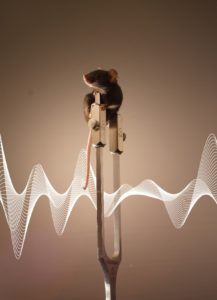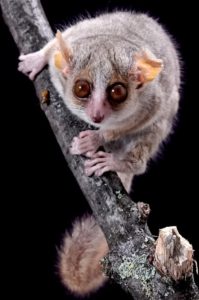Our lab develops innovative optical, behavioral and computational tools to study sensory-motor processing and decision making in the mammalian brain. We aim to compare these processes across rodents and primate species, not only to understand their evolutionary constraints, but most importantly to identify their general principles. We currently focus on three main topics:
 Pallesthesia: Most object around us are not static, but move and thus continuously generate vibrations. These oscillatory movements propagate through the substrates, and are sensed by mechanoreceptors in our body. In addition to providing cues about moving objects, our sense of vibration (pallesthesia) is also essential when we explore surface textures. Combining the sensory psychophysics and neuronal recordings, we study the sensory coding of vibrotactile stimuli from the peripheral organs and follow its transformation all along the ascending pathway to the cortex, where we aim to deduce general computational principles of sensory coding. In parallel, we explore how to apply these principles to convert music into vibrotactile cues for the hearing-impaired or deaf.
Pallesthesia: Most object around us are not static, but move and thus continuously generate vibrations. These oscillatory movements propagate through the substrates, and are sensed by mechanoreceptors in our body. In addition to providing cues about moving objects, our sense of vibration (pallesthesia) is also essential when we explore surface textures. Combining the sensory psychophysics and neuronal recordings, we study the sensory coding of vibrotactile stimuli from the peripheral organs and follow its transformation all along the ascending pathway to the cortex, where we aim to deduce general computational principles of sensory coding. In parallel, we explore how to apply these principles to convert music into vibrotactile cues for the hearing-impaired or deaf.
Motor control: Whether it is for tying one’s shoe laces or exploring the iPhone, we need to continuously practice new movements and acquire novel motor skills. Frontal cortex is one of the key brain areas participating in coordinating and learning of such voluntary movements. Our experiment where we record neuronal activity in rodents and primates during goal directed arm movements and object manipulation will ultimately help us to understand some of the basic neuronal mechanisms that govern our own actions, enabling us to solve new challenges. We test the neuronal mechanisms using all-optical brain-machine interfaces were we simultaneously read out and modulate neuronal activity in individually identified neurons.
 Primate neuroethology: Primates are considered some of the most highly encephalized creatures on the planet. The significant metabolic expense of their large brains is thought to be justified by the remarkable cognitive functions and behavioral skills. With their advanced neural circuits, primates are thought to surpass other animals in flexibility, agility, curiosity, and the ability to understand and interact with their environment and social groups. We study how these traits are related to brain architecture and neuronal activity in the mouse lemur (Microcebus murinus), an animal model for an early prosimian stem primate. Our studies range from observations in their natural habitat in Madagascar, to controlled neurophysiological experiments in large scale naturalistic laboratory settings. For these experiments we have developed a novel behavioral tracking framework called EthoLoop.
Primate neuroethology: Primates are considered some of the most highly encephalized creatures on the planet. The significant metabolic expense of their large brains is thought to be justified by the remarkable cognitive functions and behavioral skills. With their advanced neural circuits, primates are thought to surpass other animals in flexibility, agility, curiosity, and the ability to understand and interact with their environment and social groups. We study how these traits are related to brain architecture and neuronal activity in the mouse lemur (Microcebus murinus), an animal model for an early prosimian stem primate. Our studies range from observations in their natural habitat in Madagascar, to controlled neurophysiological experiments in large scale naturalistic laboratory settings. For these experiments we have developed a novel behavioral tracking framework called EthoLoop.
